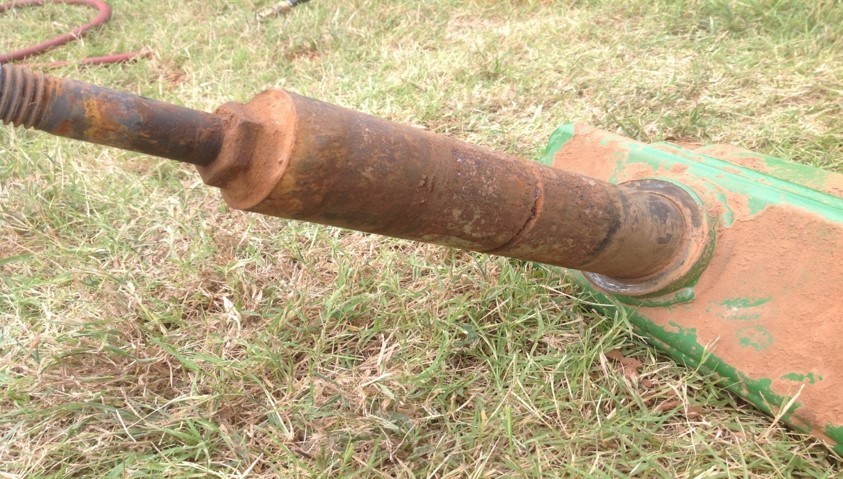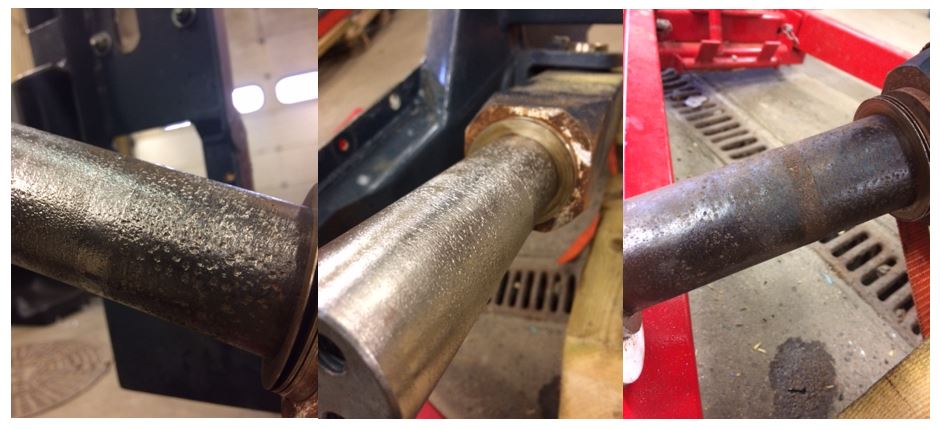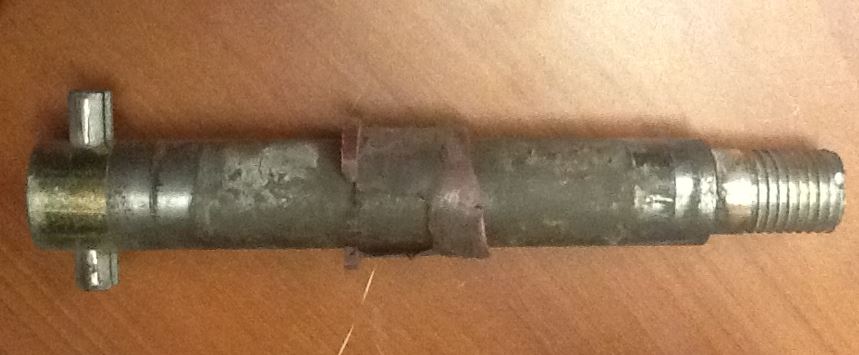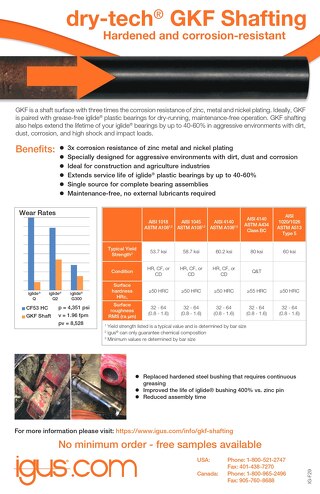Shaft considerations for bearing applications part 3: corrosion resistance
 To wrap up the 3-part series, deciding which shaft/pin solution is best for your application we are going to talk about probably the most important feature, corrosion resistance. Even if you ensure that every other aspect of the design is closely adhered to, you will see failures if corrosion begins to form in the pivot.
To wrap up the 3-part series, deciding which shaft/pin solution is best for your application we are going to talk about probably the most important feature, corrosion resistance. Even if you ensure that every other aspect of the design is closely adhered to, you will see failures if corrosion begins to form in the pivot.
Trouble in the field
Years ago, I received a phone call from a long-time customer asking for a visit to review an application. They had been using one of our iglide® bushings successfully in their application for a couple of years, but they were starting to hear complaints about the pivot seizing after the unit was stationary during the offseason. The first comment from the customer was, “your bushing is failing, we need to look at a different material.” In my experience, if we fully understand the application there is almost always some other reason for premature bushing failures. In this case, it was corrosion. The picture below is the shaft from this application after only 2 seasons. My response, “you don’t have a bushing problem, you have a shafting problem!” Corrosion is a leading cause of failures for bushings. When corrosion begins to form on the surface of the shaft it changes the structure and creates a very poor mating surface. The surface roughness increases, and fine metallic particles begin flaking off. These metallic flakes are very abrasive and will grind away the bushing.
Corrosion is a leading cause of failures for bushings. When corrosion begins to form on the surface of the shaft it changes the structure and creates a very poor mating surface. The surface roughness increases, and fine metallic particles begin flaking off. These metallic flakes are very abrasive and will grind away the bushing.
Shaft corrosion: not just red rust
Corrosion presents itself in several ways. While red rust, as shown above is the most visible form, there is another way to tell that corrosion is present. The pictures below are 3 pins that have been used in real world testing. As you can see, there is no visible red rust but there is quite a lot of pitting on the surface. This pitting is the result of metallic particles being flaked off during use. Since the application was in continuous motion the visible red rust has not yet been formed. But as these are left stationary, the visible red rust will surely begin to form.
Why shaft plating and coatings just can't hang on
So how do you protect against corrosion? That’s an age-old question and one that comes with many answers. The most common corrosion inhibitors used in agricultural and construction machinery are zinc, nickel, and chrome plating. Each one of them has their advantages and disadvantages. Zinc and nickel are relatively inexpensive, while chrome provides a hardened surface. However, all 3 have a shared flaw; they are thin layered coatings that can be worn away by a bushing. As soon as you remove the thin layer you are back to bare alloy and corrosion begins to rear its ugly head. As you can see in the picture below, the yellow zinc coating was worn off during use which allowed corrosion to form and completely wearing away the bushing. igus® has addressed this common design challenge by developing GKF Shafting. When you incorporate GKF into your design you ensure the busing is running on a ideal surface roughness and hardness as well as superior corrosion resistance compared to zinc, nickel, and chrome plating. We have optimized the manufacturing process in order to provide a pin that is ready to be used in a greaseless, maintenance-free pivot.
igus® has addressed this common design challenge by developing GKF Shafting. When you incorporate GKF into your design you ensure the busing is running on a ideal surface roughness and hardness as well as superior corrosion resistance compared to zinc, nickel, and chrome plating. We have optimized the manufacturing process in order to provide a pin that is ready to be used in a greaseless, maintenance-free pivot.
For more information on igus GKF Shafting please visit our website. To speak with an expert about your application, please do not hesitate to contact our Agriculture & Construction Industry Sales Manager.



